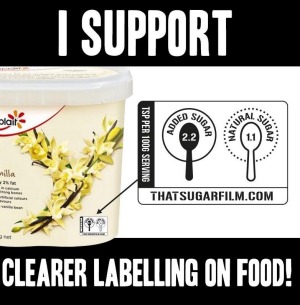HEALTH STAR RATINGS...Some background, plus study showing shoppers lose faith
 Caryn Zinn
May 22, 2016
Caryn Zinn
May 22, 2016

Some more background:
HEALTH STAR RATINGS. This is a health / food guidance system developed in 2014 for packaged foods (in NZ and Aussie). The number of stars associated with each food is determined by an algorithm that considers the overall nutritional value of the food product; foods with more stars are said to have better nutritional value.In public health we have a duty to provide guidance to consumers when it comes to best practice, healthy eating. "We" choose various ways to do this, including the more recently applied health star ratings system.
This is a real catch-22 scenario for me as a dietitian because despite having all good intentions to guide the public in the right way, by creating such systems, we are simply endorsing packaged food. As a dietitian I think it is important to stay true to the promotion of whole food, i.e. food that is as unprocessed as possible or has the lowest HI factor (- meaning Human Interference factor, NOT to be confused with the GI (or glycaemic index) factor) The term "whole food" is often challenged, particularly with foods such as dairy products and tinned fish, so that's why I always qualify with "...as unprocessed as possible".
Here are some examples of where the star rating system goes horribly wrong:
1. When 4 1/2 out of 5 stars is given to flavoured milk and 3 1/2 - 4 stars out of 5 is given to standard milk.
2. When orange juice is given 4 out of 5 stars.
3. The more recent one I've come across: When artificially flavoured low fat yoghurt is given 5 out of 5 stars.
"We" are officially endorsing sweet, packaged foods, both naturally and artificially sweetened. I am often criticised for being an advocate of the Low Carb Healthy Fat message and am told that people hear what they want to hear and take half the message. Well this is likely to be true with packaged foods too as guided by the star rating system and other similar systems.
As a health professional, I can certainly see the dilemma:
Should we continue to develop flawed systems which might guide the public when it comes to comparing one packaged food item with another but at the end of the day are just continuing to endorse packaged food?
Should public health officials simply NOT guide the public at all when it comes to packaged food and stay true to the "whole food" message?
A recent study in the Sydney Morning Herald in 2500 Australians showed only one in five people actually care about the food guidance system used on the packaging of food (i.e., the Health Start Ratings). I'm suspecting people are seeing through the "let's reformulate to get a higher star" story, as recently occurred when Kellogg's reformulated Nutrigrain, and reduced its sugar to 27%, (which is still ridiculously high), but still managed to get a four star rating.The health star rating system has had flaws from the beginning, and despite its best intentions, it is simply not working. But instead of pulling it, the government are injecting an extra $5.3 million in the next two years to promote it further.
A Nestle spokeswoman said the rating was appropriate because Milo was regularly consumed with a glass of skim milk. Hhhmmm, perhaps we shouldn't be relying on the "Nestle" take on things. Dietitian Rosemany Stanton says the system needed to be tweaked to restore confidence. "I wouldn't allow it on drinks or snack foods," she said. Mark Lawrence, a professor in public health nutrition at Deakin University, said ratings should not be used for treat foods. "We should put warnings on discretionary foods," he said.
I'm thinking the suggested tweaking is not going to bring back the confidence, but instead cause more problems.
My personal thoughts? I'm with Damon Gameau on this one - he's That Sugar Film guy. Let's scrap the lot of it and label sugar only - with pictures of teaspoons of sugar. People understand teaspoons, not grams or %s. Damon advocates showing the amount of added sugar in a product, and the amount of natural sugar in a visual - check out the picture! This could cause some confusion because people don't quite understand that natural sugars are still a concern for human health. Perhaps it's a good time to help them understand this issue. Nonetheless, it would still be a great improvement from our current system.
One thing's for sure - sugar is on the MAP and it's here to stay. Progress!